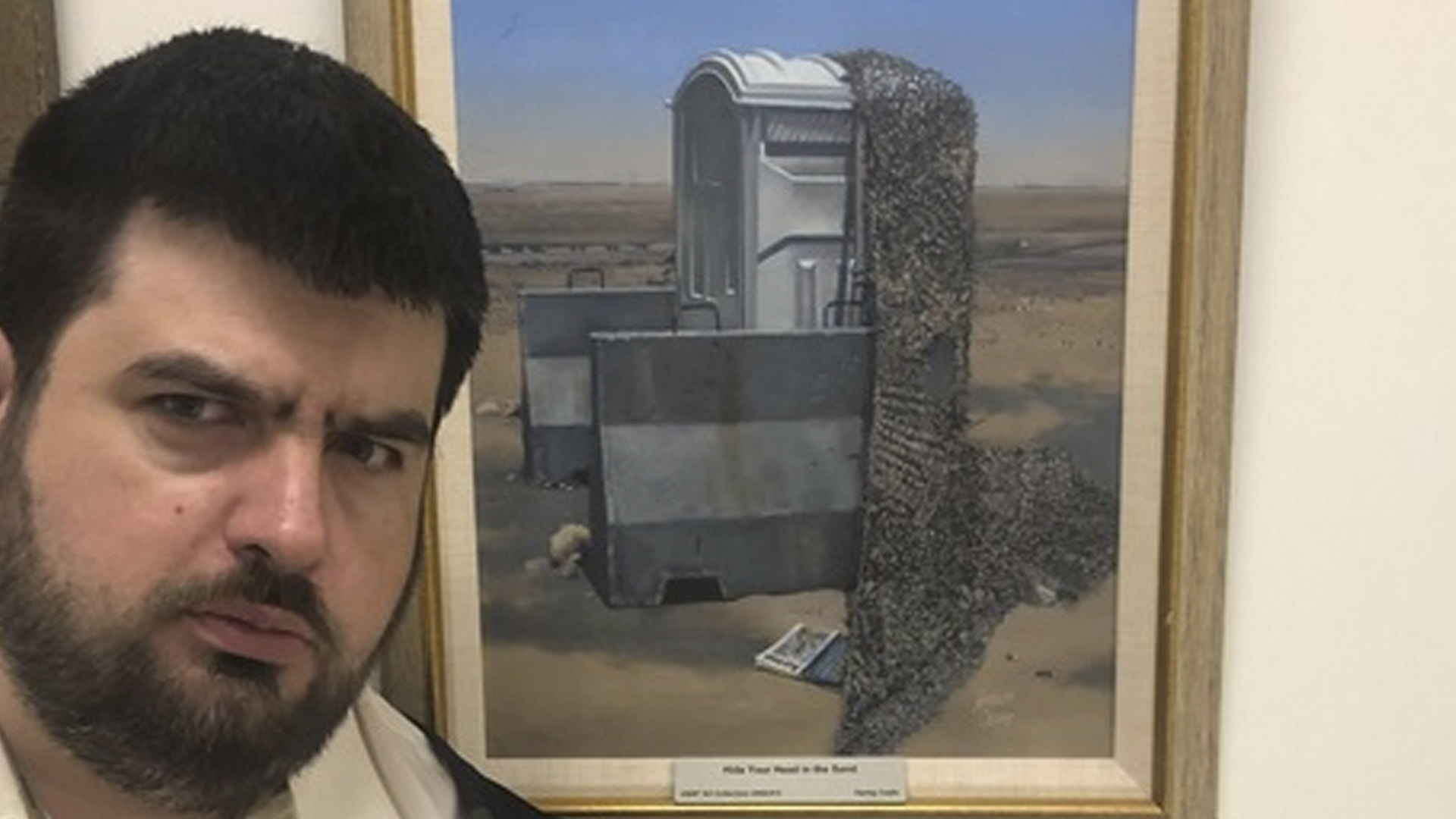

On a drizzly and gray day in Washington, D.C., I went to the headquarters of the most powerful military the world has ever seen to find an artist’s rendition of one of the most iconic pieces of equipment from the Global War on Terrorism: a portable toilet.
Known both as Porta Johns and ‘porta-shitters’ to the service members who rely on them downrange, these plastic contraptions were as ubiquitous in Iraq, Afghanistan, and other post-9/11 battlefields as the Bell UH-1 helicopter, or Huey, was during the Vietnam War.
For many troops who deployed overseas, Porta Johns not only provided troops with a Middle Ages substitute for indoor plumbing but also provided a venue for more artistically inclined service members to draw phallic imagery and write poems too obscene to recall here.
Subscribe to Task & Purpose Today. Get the latest military news and culture in your inbox daily.
This reporter first became acquainted with the squalor associated with these supposedly sanitary commodes at FOB Normandy, Iraq, in 2006. A key lesson I later learned was to ask each U.S. military installation’s “mayor,” or administrator, when the Porta Johns was scheduled to be cleaned and then try to time my natural rhythm accordingly.
Given the fact that every patriot who raised his or her right hand and vowed to defend the Constitution over the past three decades has had to use a Porta John at one point or another, it should not be surprising that the Pentagon should have a painting of a downrange crapper.

The Porta John portrait in question — the existence of which went viral on Twitter earlier this week — hangs on the Pentagon’s fifth floor. It is smaller than the surrounding paintings, and yet it has an outsized presence among its peers. I did not so much find the picture as much as it appeared before me, much like Omar Sharif’s entrance through a mirage in Lawrence of Arabia.
Jon Simkins at Military Times has already provided a brilliant homage to the painting, which shows a lone Porta John protected by concrete blast walls and camouflage netting. Near the bottom of the painting, one can see the depiction of a newspaper that looks a lot like Air Force Times, most likely recently read by someone while sitting on the throne.
The name of this masterwork is “Hide Your Head in the Sand,” and it was painted by Harley Copic, who died in 2021. Copic was a famous aviation artist who produced more than 50 pieces that are still displayed in the Pentagon and elsewhere, his obituary says. According to the Air Force Art Collection, the painting depicts a Porta John at Tallil Air Base in Iraq in April 2003.
It’s unclear exactly why the Pentagon has included the Porta John portrait among its vast collection of paintings, but there is no doubt that the picture is one of the building’s many idiosyncratic fixtures, such as the Purple Water Fountain, the Fighter Pilot Bar, and the rumored Space Bar.
While some observers are awed by the spectacle of U.S. aircraft carrier operations, this reporter was truly moved by Copic’s rendition of a Porta John. After all, there is only one country that could make portable toilets become an essential element of 21st century warfare.
The latest on Task & Purpose
- Is Ukraine winning the war against Russia?
- Air Force sends F-22s to Middle East to deter aggressive Russian pilots
- Army secretary concerned ‘woke military’ criticism could hurt the service
- Fort Sill commander fired amid investigation
- Fort Polk is renamed Fort Johnson